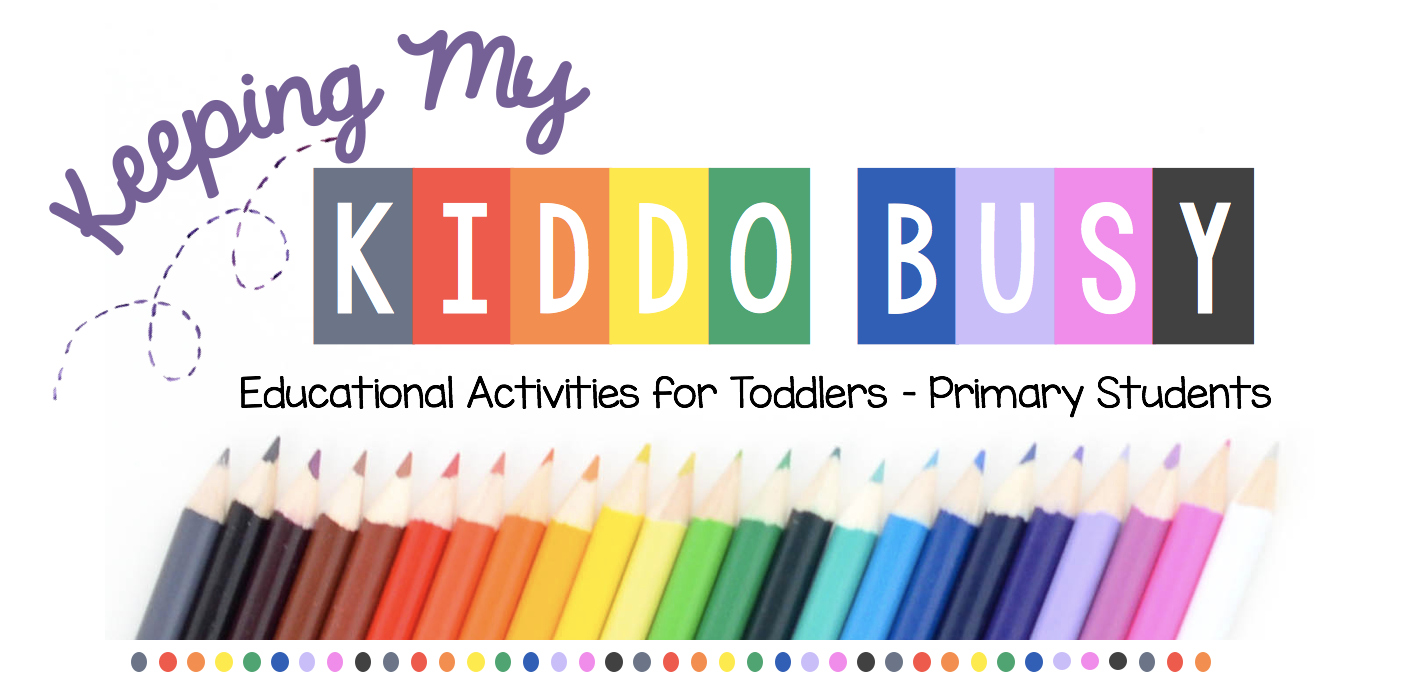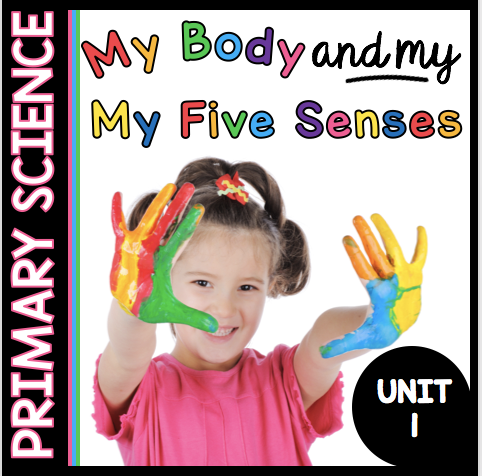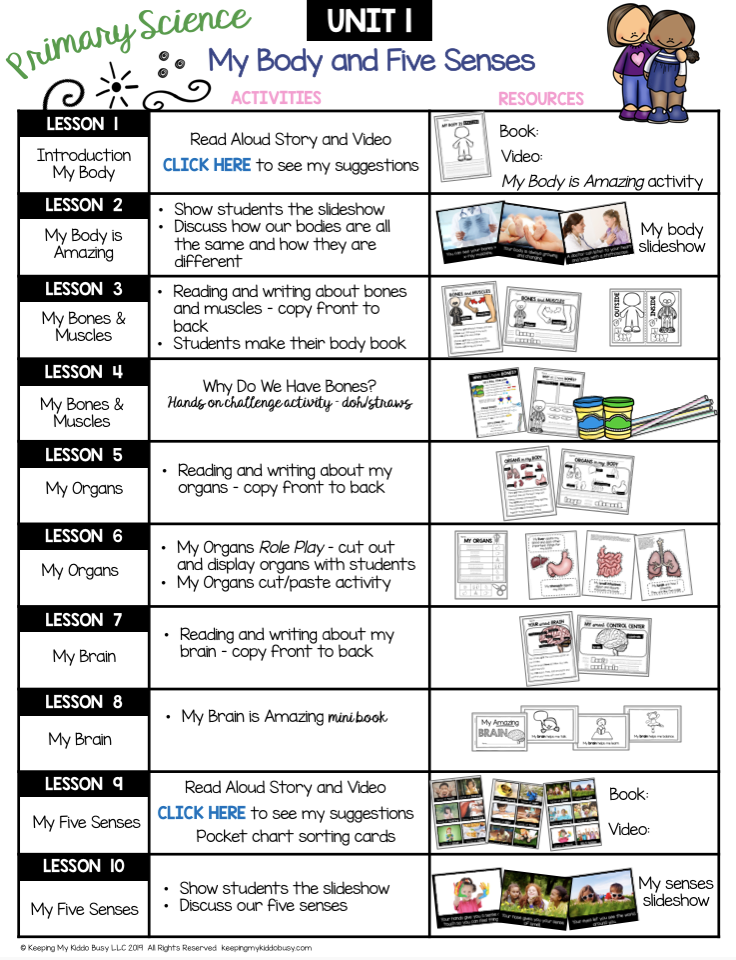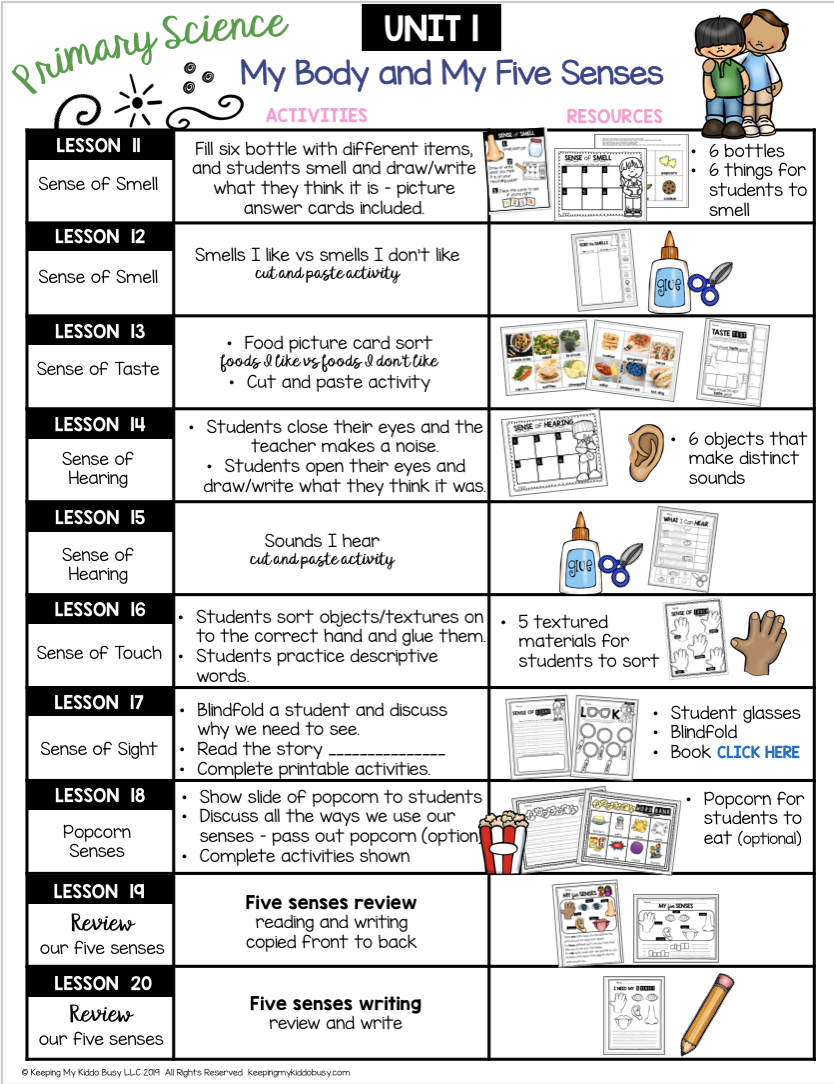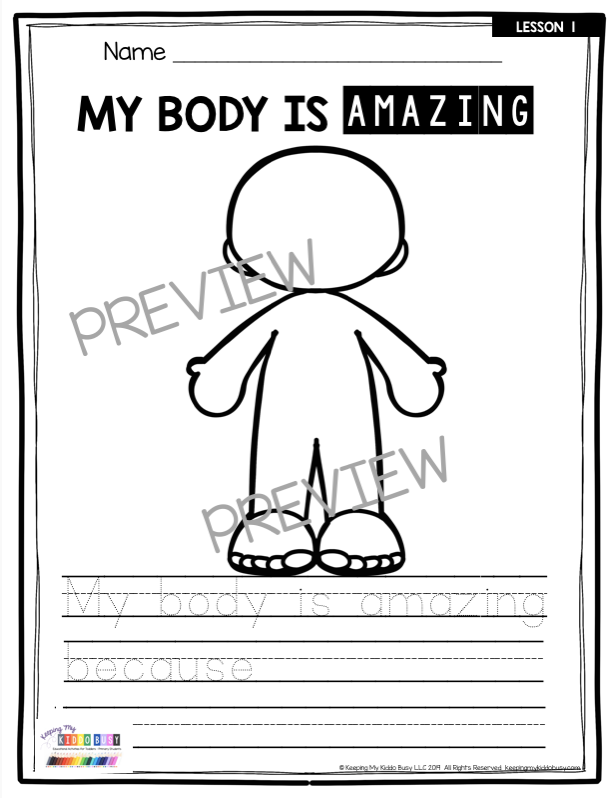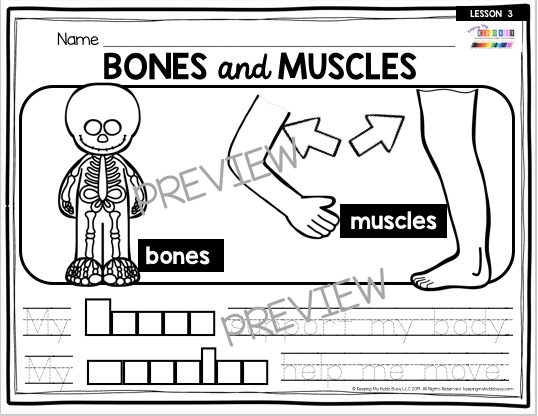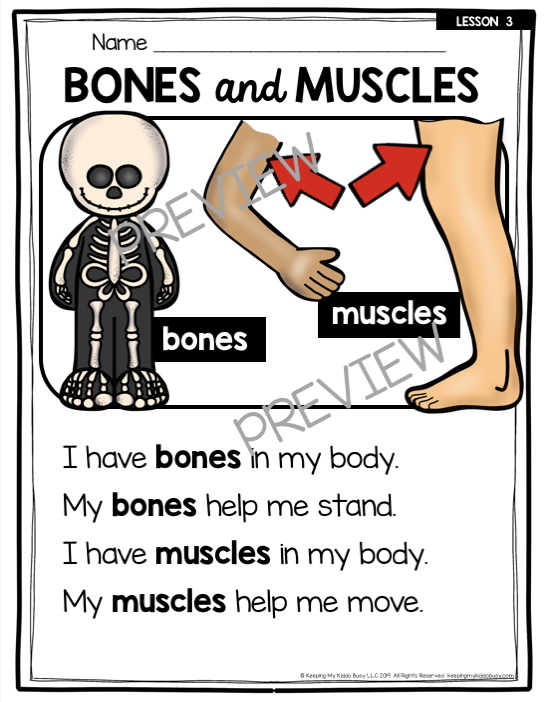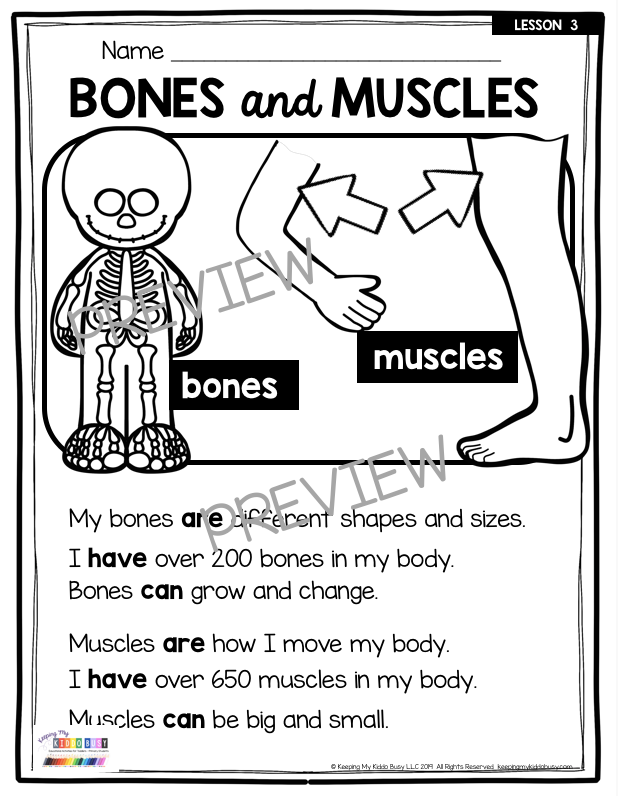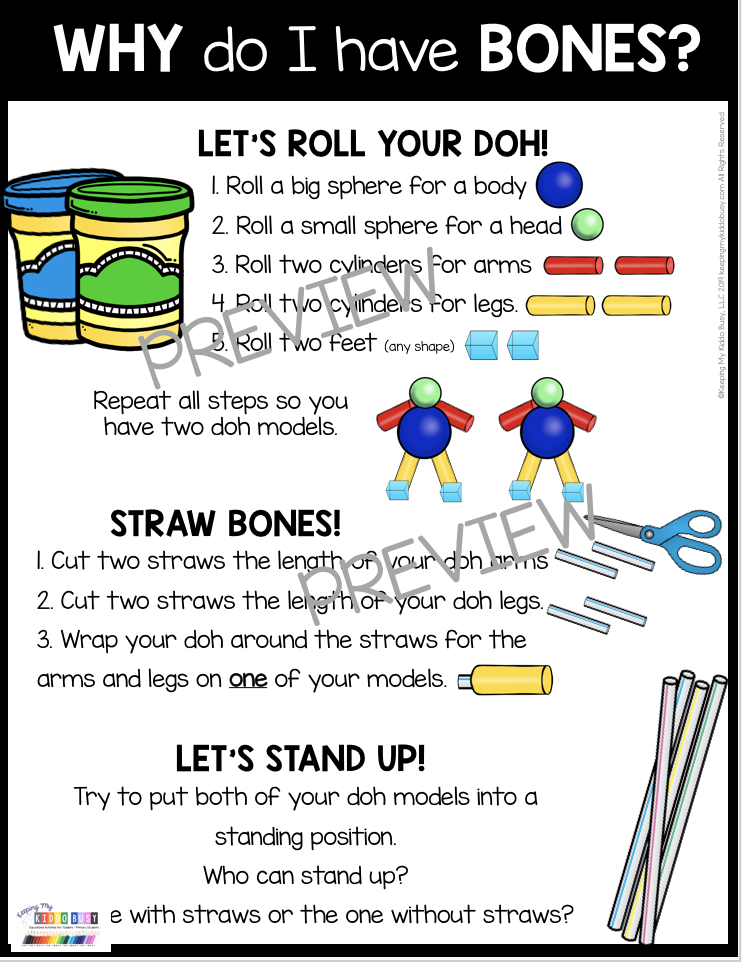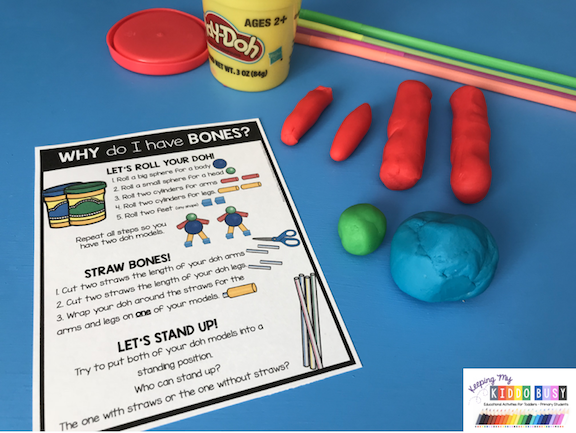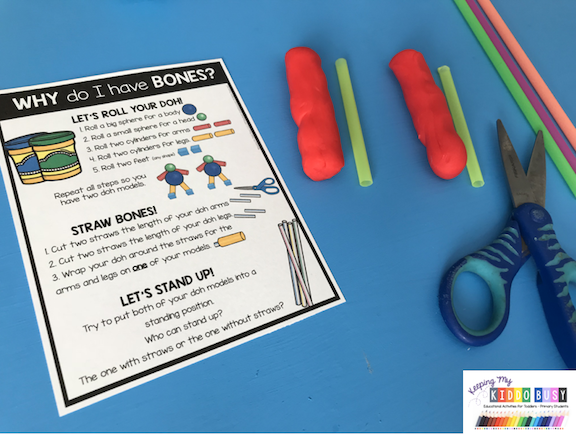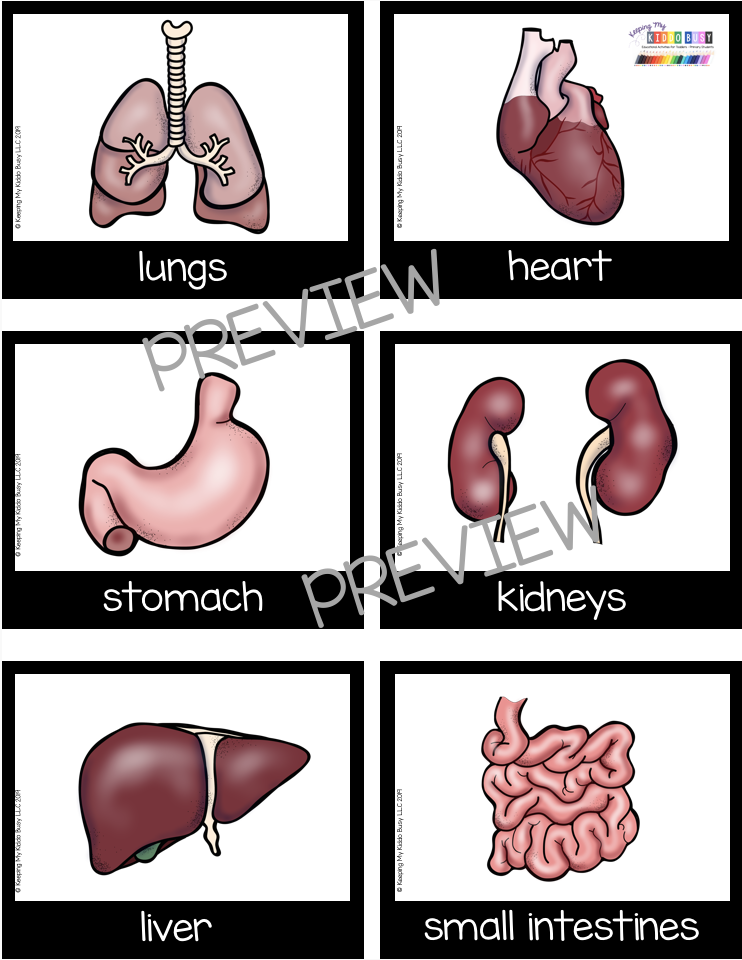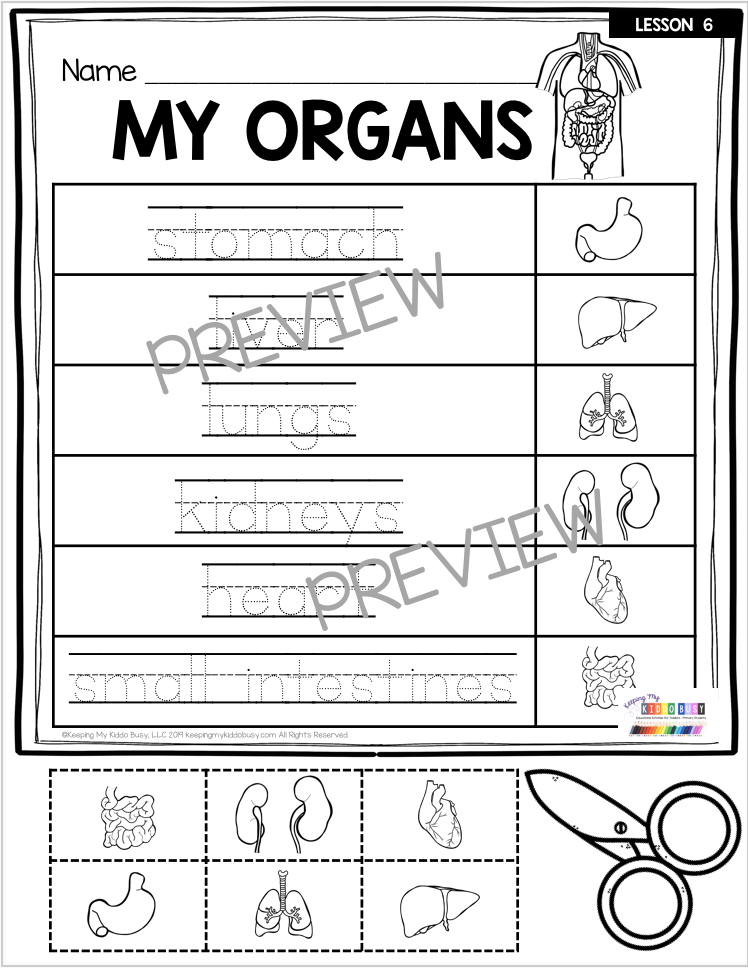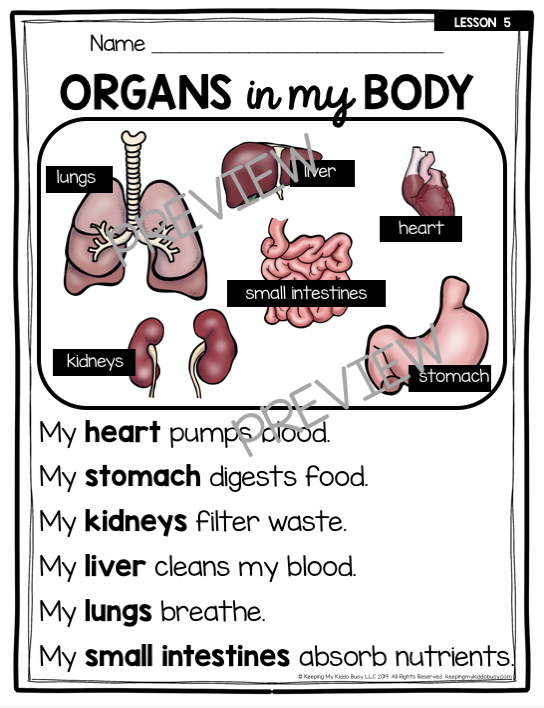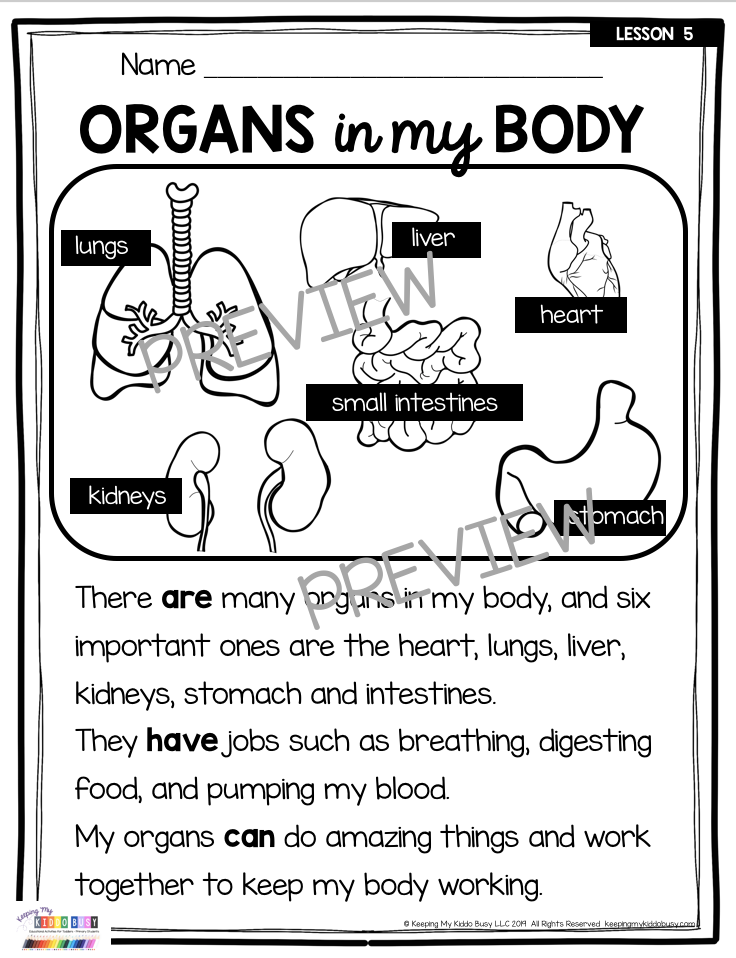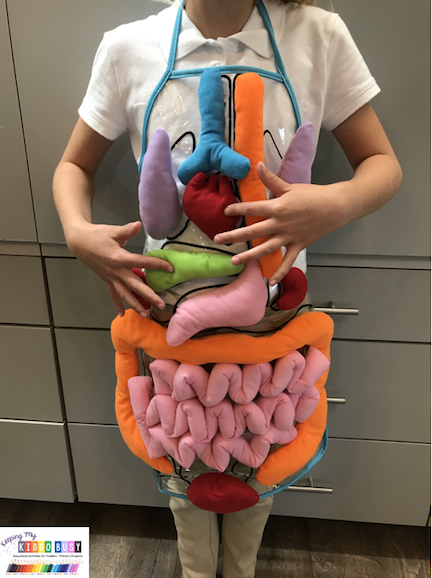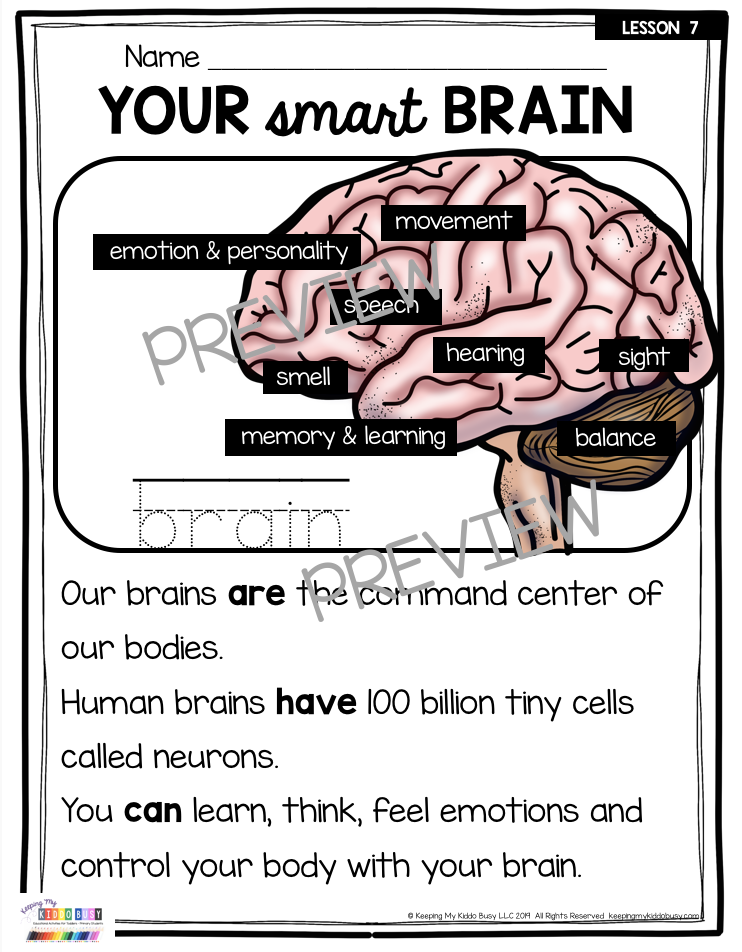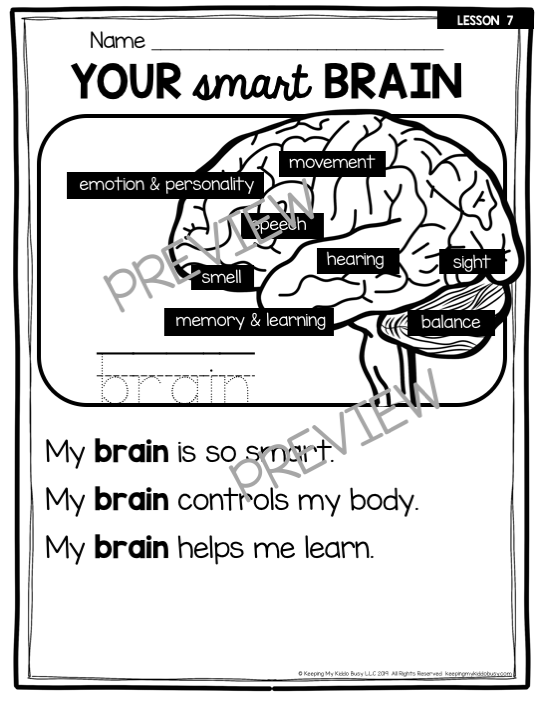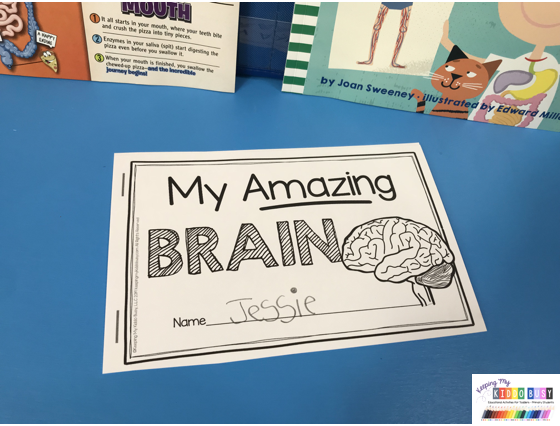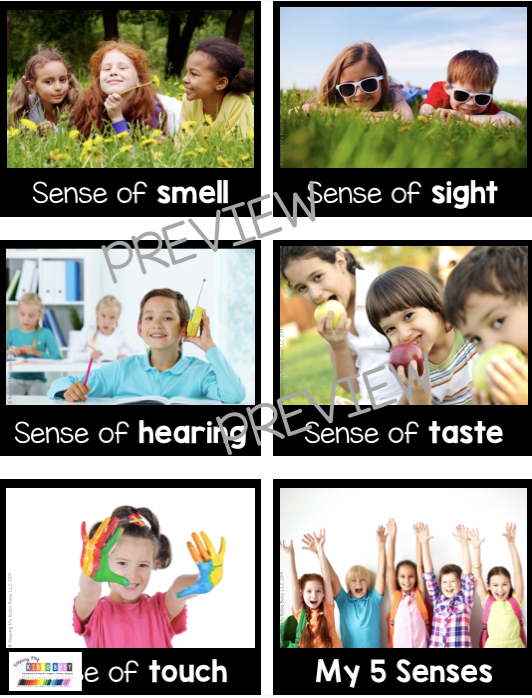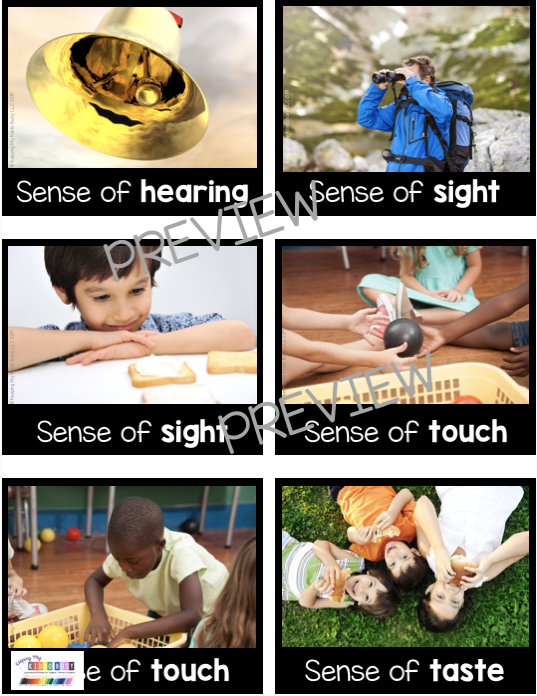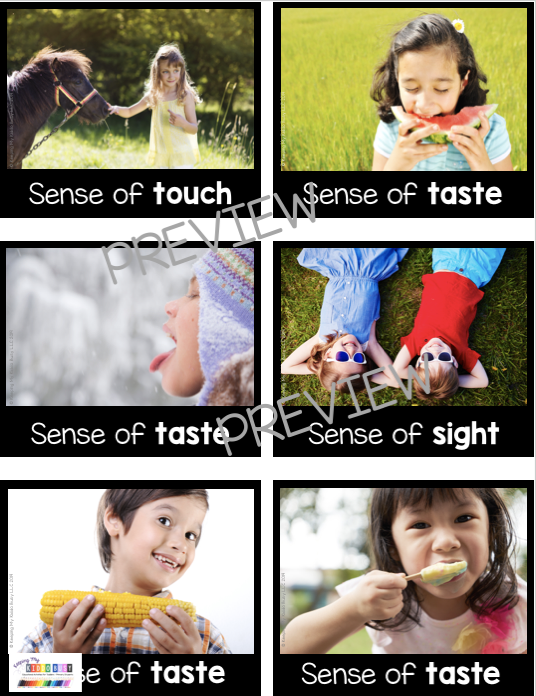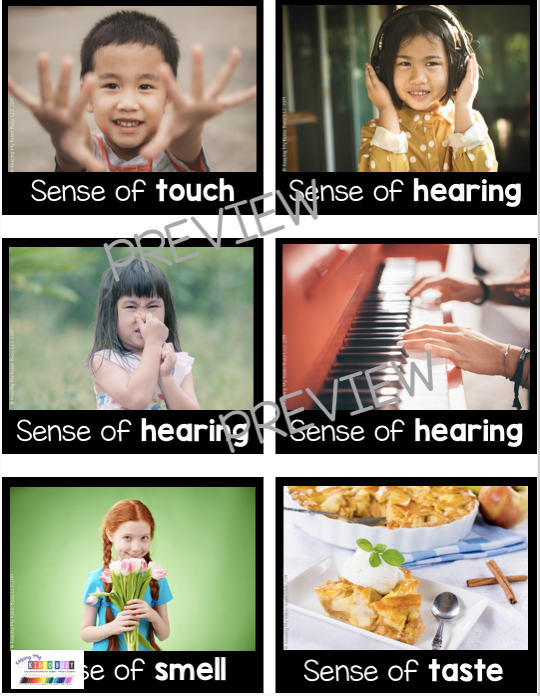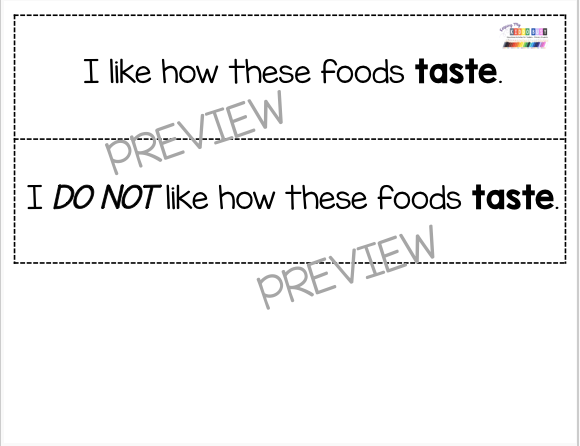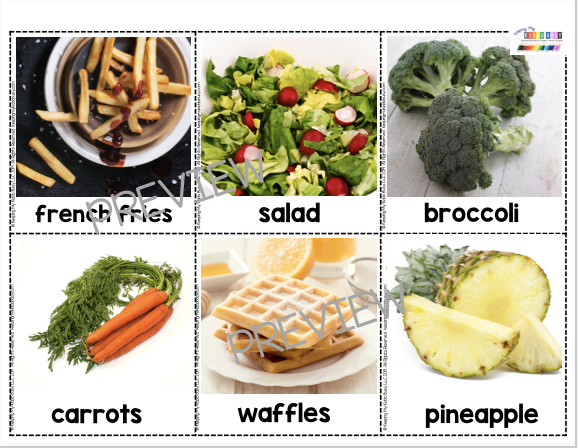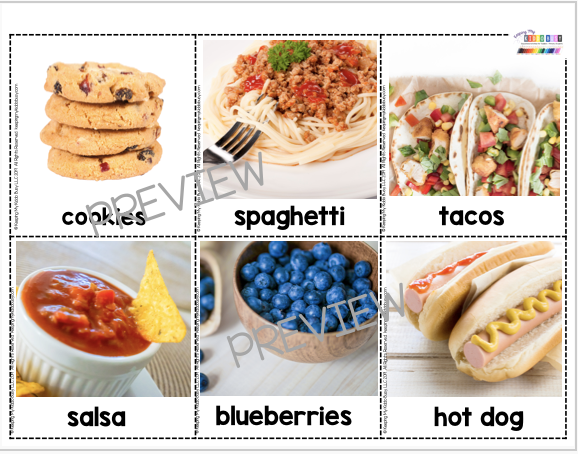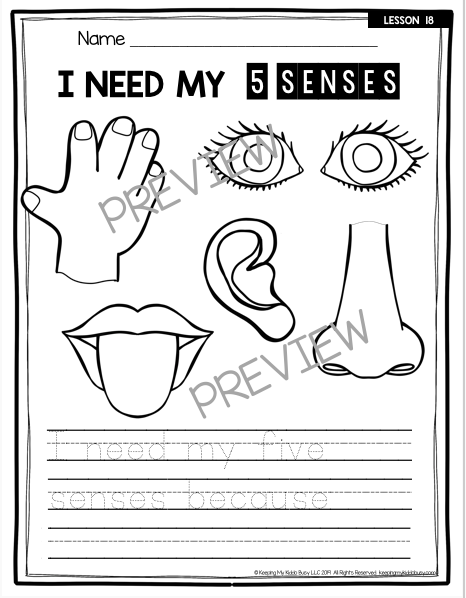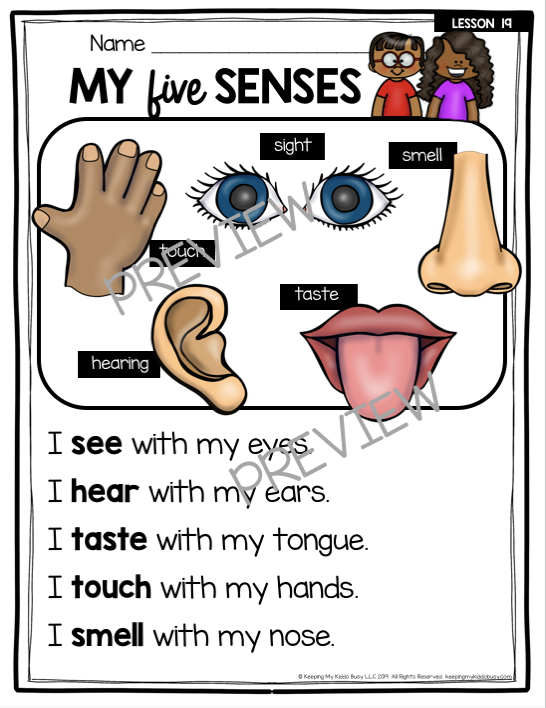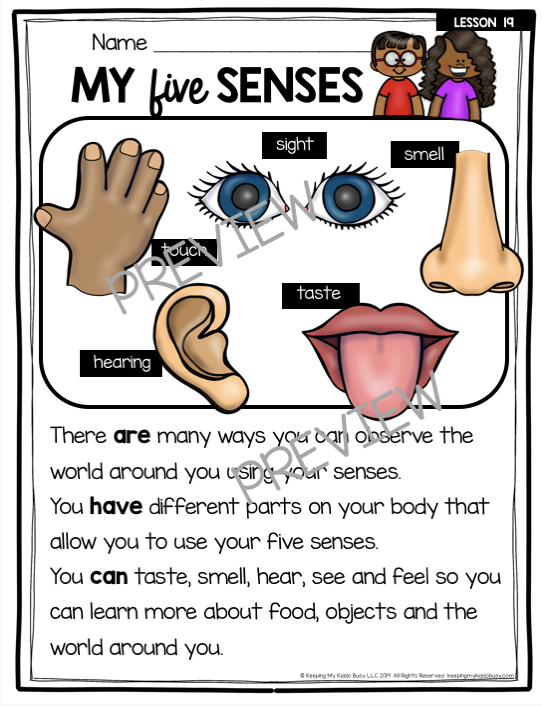All About My Body and 5 Senses - FREE ACTIVITY - Science Unit 1
PRIMARY SCIENCE UNIT 1 - THE HUMAN BODY
We are so excited to dig into Unit 1 in our science sequence!
We kick off science this year with My Body and My Five Senses. It is the perfect place to start science with our primary kiddos. This year we are going to explore and learn about the world around us, starting with our own bodies.
This unit covers everything from our organs and bones, to our brain and to how we learn about the world using our five senses.
Try a fun FREE activity right on this blog post all about our bones and muscles.
This page contains affiliate links. Read Full Disclosure
This unit is broken up into 20 lessons. I outline the exact resources and activities I use for each lesson.
I use this adorable book to kick off our unit. My goal for lesson 1 is to get the kids super excited about their bodies by expressing over and over again that, “Your body is AMAZING!”
This book is so neat and gives some incredible facts. The kids stay super engaged and love to ask questions.
After we read the story, my kids are ready to get up and wiggle a little, so this video is perfect.
The kids love it so much, we actually sing to this video quite a few times throughout the unit.
We finish the first day of the unit with this writing prompt. After reading the story and watching the video, students can usually finish this sentence starter pretty easily.
Then they can decorate and color their body.
In lesson 2 we go over the slideshow. It starts with the photo of the two children running and jumping and it says, “Your body is amazing!” It then shows students beautiful pictures and simple sentences about why your body is so amazing.
We talk about how all of our bodies are the same, and how they are different from each other.
In lesson 3, we get to learn more about our bones and muscles.
All of the reading passages in this unit come in two differentiated versions as well as color and black and white.
One version is perfect for pre-k and kindergarten readers as the sentences are very simple.
The first grade version use the keywords are, have and can. Students appreciate this format and this helps build their fluency and comprehension. Plus, with new vocabulary words to learn, having this format really helps with their reading confidence. You can copy these front to back and these make an excellent ELA lesson with science content.
Next, in lesson 4, we do a STEM activity all about bones and muscles. The kiddos love this activity, and it is the perfect way to show why we need bones and muscles and how they work together.
I ask students why they think we have bones? Get ready for some funny answers here!
Then I make a little person out of play-doh in front of the students, and try to stand him up… but he won’t!
Then I make another little model, and this time I roll the doh over/around the straws on his arms and legs (to save time - you could just do the legs.)
Now I stand him up… and he stays (lean him against your white board on the tray.)
We have bones so our muscles can stand straight and tall!
This activity is really not very much prep work for you, but it does require some modeling. I show students the materials and activities while we are all at the carpet first. Then I have them repeat the directions back to me twice.
In lesson 5 we move on to our organs! I teach about the six main organs (so the kiddos didn’t get overwhelmed with information about too many organs.)
Lesson 6 is always a huge hit! I print the body organs and the kids can “wear” them. The printable reading passages and activities come in differentiated versions so you can use the ones that best meet the needs of your students.
This is the perfect way to show about how big each organ actually is, as well as where on their body it is. They love taking turns coming up to the front of the carpet to “model” the organ for the class.
Have you seen this amazing human body organ apron?
It shows the kids exactly where each body organ goes and they velcro them on and off. Even the intestines come out and the kids are fascinated by this. They take turn wearing the apron and the class loves to take the organs on and off.
If you want the sizing to be more correct, you can wear it!
This can then be moved to a center and the kids can’t wait for it to be their turn.
Then after this, students usually know the organs well enough to complete their amazing organs flip chart.
These turn out so cute and the kids like to “quiz” each other.
Lesson 7 and 8 are all about the brain!
They follow a similar format that the kids appreciate.
We do our reading and writing about the brain, and then we make our mini books.
We go over the vocabulary, read and then color our books. Next, we buddy read a few times for extra fluency practice.
Now that my kiddos have a good foundation of our bones, muscles, brain and main organs, I introduce them to my squishy friend!
This kit is perfect for kiddos prek - 3rd grade. On one side, squishy has bones and on the other side it shows the muscles.
Children can remove and organize the main organs including the heart, lungs, intestines, liver, kidneys, brain, stomach, esophagus, diaphragm along with the skull, fetus, tibia/fibula humerus and rib cage. The poster can be laminated and laid flat and students love removing the body parts and placing them on the correct spots.
Make it even more fun and bring in a doctor’s coat and glasses and they can do “surgery”!
This kit is so well made and sturdy enough for the kids to play with. The organs are even squishy and have an interesting texture.
MY FIVE SENSES
The second half of our unit is about our five senses! This is so much fun to teach to primary students. For lesson 9, I start with this book (it comes in Spanish too!)
If your voice needs a break, you can let someone else read this book aloud HERE
Sometimes I read the book first, and then the next day I have students watch the video on youtube for review.
The kids could not be more excited to share what they see, feel, hear, smell and taste. You never have to work for engagement with this unit!
There are so many fun activities to go with these lessons, but first we learn the five senses song. I play this song whenever my kids need a wiggle break over the next couple of weeks, and soon enough they will be humming it at recess. The kids will remember their five senses in no time with this cute song!
These cards are perfect for pocket chart sorting after reading the book and singing the song.
Lesson 10 is our five senses slideshow!
Afterwards we share and discuss how we use our senses at school. Students absolutely love making connections and sharing.
In lesson 11 we dive into our sense of smelling! This lesson does take some prep work, but it is worth it.
I buy smelling jars (I get them for 2/$1 at one Dollar Tree) and then spray the insides with paint or line them with paper so the kids can’t see in.
Number the jars 1-6 so students can smell and then record what they think it is on their recording sheet. This is seriously so much fun and the kids are all a buzz about it.
I provide the word bank cards (so students have an idea of what it could be - display these and have them guess which one is in each jar - this is optional.)
You can have students write or draw on their Sense of Smell recording page.
In lesson 12 the kids love to sort the smells they like vs the smells the do not like.
For lesson 13 we move on to our sense of taste!
Of course students love to give their opinion on which foods they like and which they do not.
I print two sets and have two students sort them in front of the class. We compare and contrast the two pocket charts and discuss how we all have different taste buds.
Students then get to draw three things they like and three things they don’t like.
Then they cut out the pictures and paste them in the correct spot.
I always love to see what they draw because sometimes it surprises me!
Next, we are on to lesson 14 - all about our sense hearing!
This lesson is super fun! I have the kids close their eyes and I play a sound. It can be anything from bells, to music, to closing a book, etc.
After each sound they open their eyes and record what they think it was on their paper.
After all six sounds, we compare with each other and I give them the real answers.
Then for lesson 15 we can practice writing and spelling with our “What Can I Hear” activity page.
Students trace the words, color and match the pictures.
In lesson 16 we move on to our sense of touch!
How fun is this sorting activity? I start by bringing in a tub of objects and we just pass them around and students practice using adjectives to describe how they feel.
I then relate our sense of touch to clothes we wear… “Would you want to wear something pokey or bumpy?” or “Would you want your bed to be sharp?”
Then they get their sense of touch sorting page and I give them five objects and they place them where they think they go. I go over where I place my objects and we discuss. You could use so many different objects you have in your art cupboard for this activity - sandpaper, velcro, Popsicle sticks, buttons, pipe cleaners, etc.
In lesson 17 we learn about our sense of sight.
I start by blindfolding one student at a time. We play a game where we give that student hints about what I am holding up in front of the class (like a teddy bear, a fish, a fork, etc.)
The other students must give clues like what color it is, if it is an animal, etc. without telling the blindfolded student what it is. The blindfolded student must then guess based on the clues they are given.
They love this game, but we talk about how long it takes to understand something with clues, versus just opening our eyes to see it for ourselves. We talk about all the things we couldn’t do without our sight - read a book, watch TV, etc.
Next, we get up and get moving by going on a scavenger hunt around the room. You can copy these activity pages front to back and students hunt around the room for things that are a certain color. Then they draw the color objects in the correct magnifying glass.
If you give your kids special glasses, they will be so excited to go on this scavenger hunt and learn about their sense of sight.
Lesson 18 is so much fun! Now that we have learned all about our five senses, we use them ALL by popping popcorn!
If you can, pop the popcorn in your room so the kids can hear it.
But if you can’t, you can always play the sound on your phone or computer (HERE is a youtube video that plays just the sound of popcorn.)
We talk about how does popcorn LOOK, how does it SMELL, how does it SOUND, how does it TASTE and how does popcorn FEEL?
Of course every kiddo needs their own little bowl of popcorn!
We use our popcorn word bank, graphic organizer and then follow up writing activity. This is such a fun afternoon!
It is always fun to see what students write. They do not have to use the words from the word bank, but this helps many of my reluctant writers get going.
Lesson 19 and 20 are a review, and we finish the unit with these activities.
The reading passages come in two differentiated versions. The kindergarten version has a simple sentence format and the first grade version follows the same format using are, have and can. This bring consistency and confidence for your little readers.
Ready to get started?
ALL THE PLANNING AND PREP WORK ARE DONE FOR YOU!
You and your students will have so much fun learning about the human body and our five senses!
I outline the Common Core ELA standards along with the TEXAS TEKS science standards for both kindergarten and first grade.
TRY A FEW FREEBIES!
This Five Senses Mini Unit is available for our members for FREE
You can print this in our Exclusive Freebie Library.
Not a member yet? You can sign up for free HERE with your email.
You’ll be emailed a password and a link right away so you can access our free resource catalog.
Ready to get started with the complete unit?
This is Unit 1 in our new Primary Science Series that is perfect for pre-k, kindergarten, and first grade.
Our Primary Science Series will include these units:
Unit 1 - My Body and My Five Senses
Unit 2 - Plants
Unit 3 - Animals
Unit 4 - Earth’s Systems - Weather and Seasons
Unit 5 - Earth and Human Activity
Unit 6 - Making Observations - Solids, Liquids and Gasses
Unit 7 - Simple Machines
Unit 8 - I Am a Scientist!
Please note - these units are subjects to change.
